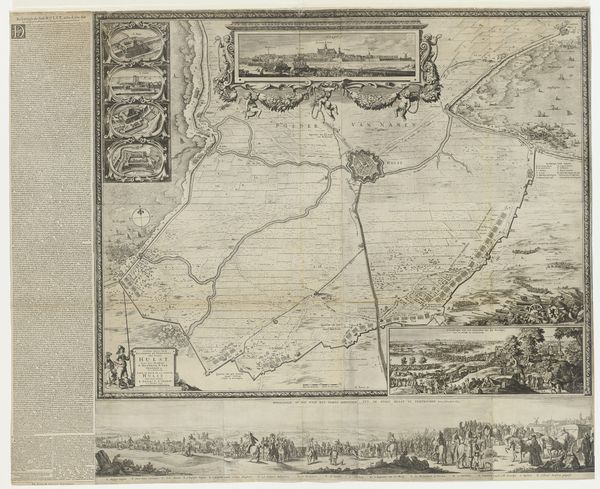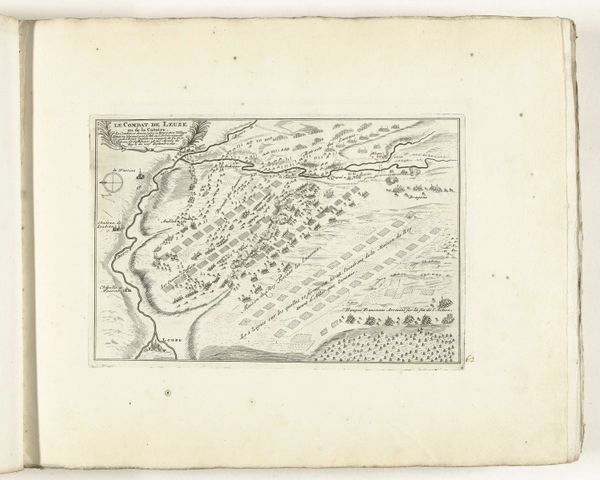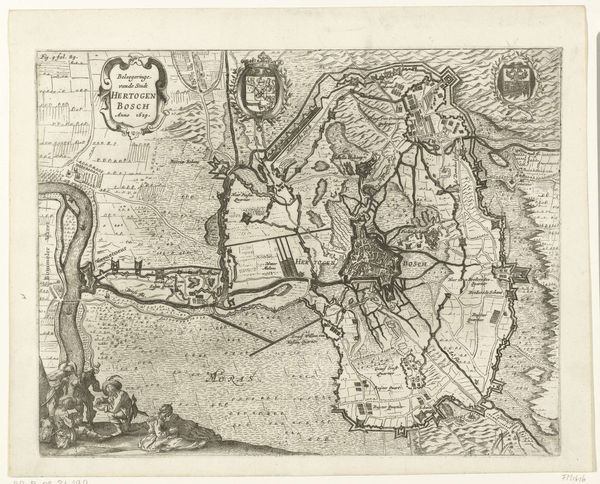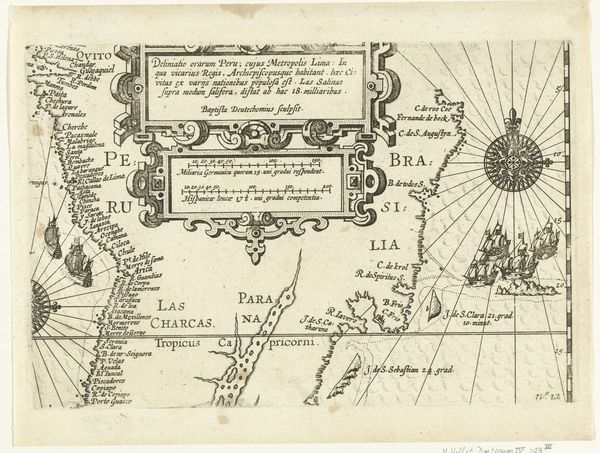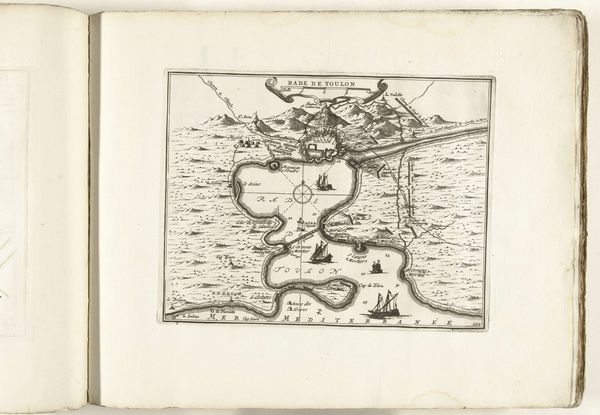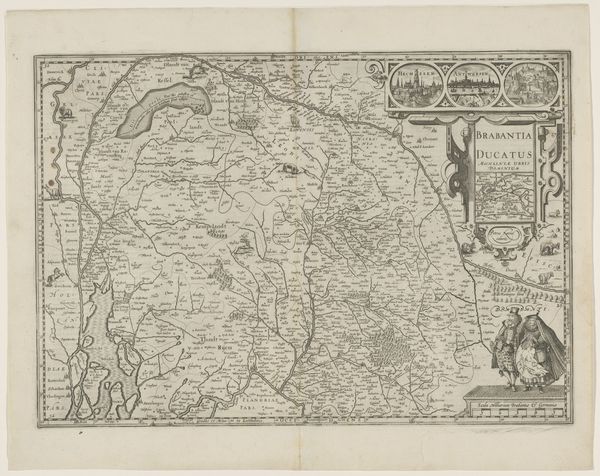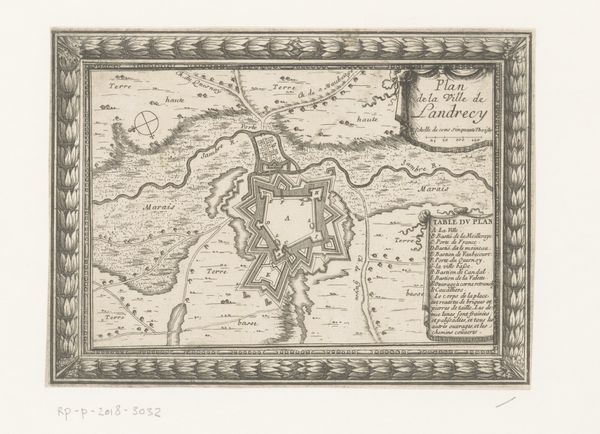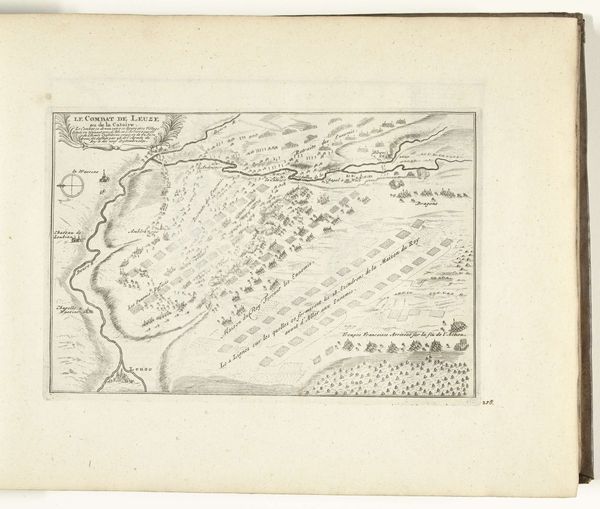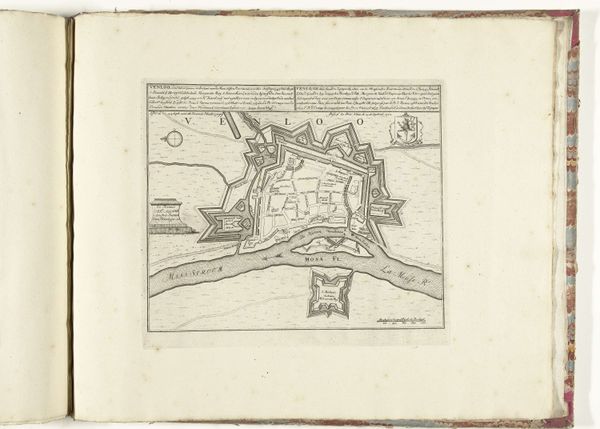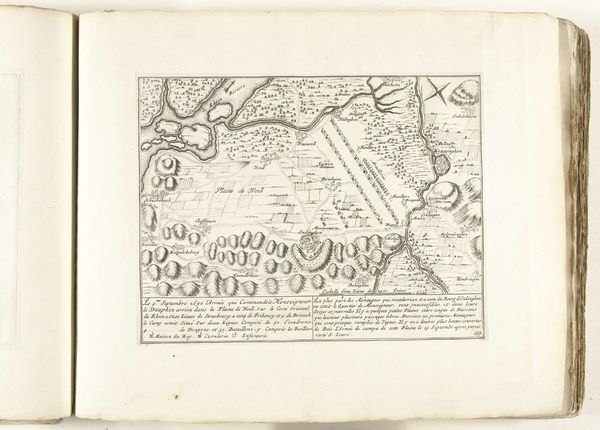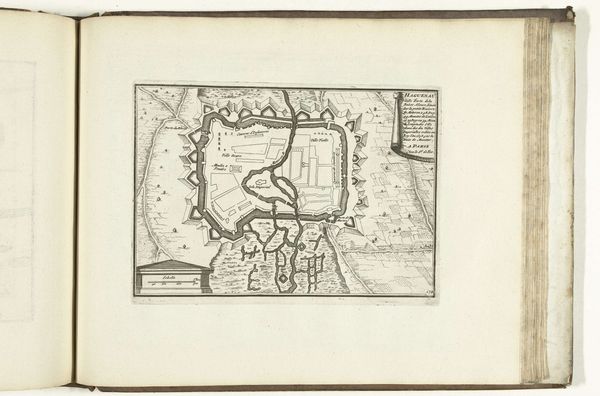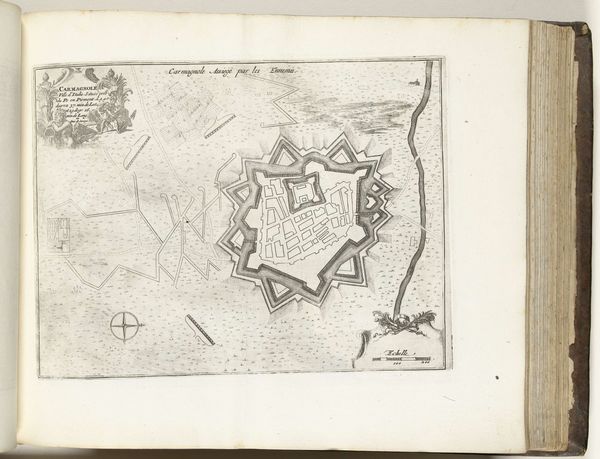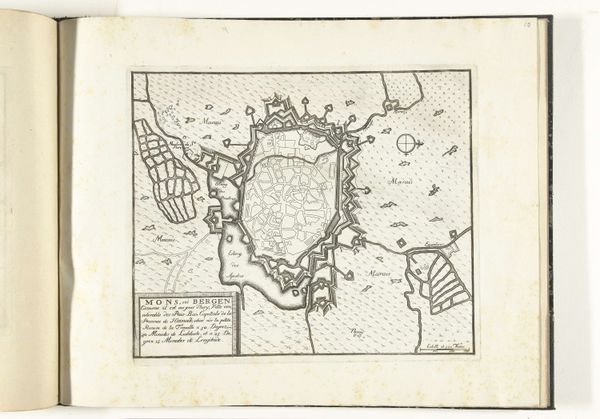
print, paper, engraving
# print
#
old engraving style
#
paper
#
11_renaissance
#
geometric
#
engraving
Dimensions: height 135 mm, width 172 mm
Copyright: Rijks Museum: Open Domain
Curator: Here, in this engraving from around 1615, we see a rendering of Nova Zembla, a cartographic imagining likely based on earlier explorations. It's intriguing, isn’t it? Editor: Haunting! That stark landscape against the detailed, almost frantic, lettering. It feels like peering into a half-remembered dream. The way the landmass just… dissolves. Curator: Maps like this, especially from that era, they’re so much more than geographical tools. They're assertions, narratives, shaped by politics, ambition, and what people believed was out there. Notice the geometric elements, the precision in some areas. Editor: And then these fantastical embellishments—the ships, the decorative cartouches. Is that a pod of whales right above Nova Zembla? It is! They become almost like protective talismans layered with intent. Every line, every flourish, tells a story. The compass rose is so prominent… leading where, exactly? Curator: Likely towards profitable trade routes. The Dutch were quite intent on finding a northeastern passage to the Orient. The "Kaart van Nova Zembla," though attributed to an anonymous creator, hints at this impulse to know and to possess. Even if that knowledge was imperfect, or outright invented. The symbols, the directionality... everything’s weighted. Editor: Absolutely. And there's an incredible tension between the objective, scientific gaze they're aiming for, and the wildly imaginative flourishes. Like seeing the birth of objectivity wrestling with ancient mythologies. It makes you consider what knowledge we accept today as completely impartial—is it? Curator: A point well-taken. Look closer, and you realize it’s less about accuracy, and more about possibility. This wasn't just a map; it was a vision board, in a way. What impact did these images of possibility have on audiences? On future expeditions? It is about revealing cultural memory and projecting it forward at the same time. Editor: Well, looking at it now, I am caught by this odd mixture of aspiration and vulnerability. I mean, charting the unknown… I wonder what was actually found versus what they hoped to find? Curator: It begs the question of whether or not some explorations were born in the ink of cartographers as much as on the waves. Editor: An engraving layered with yearning—that's quite the voyage in itself, isn’t it?
Comments
No comments
Be the first to comment and join the conversation on the ultimate creative platform.
